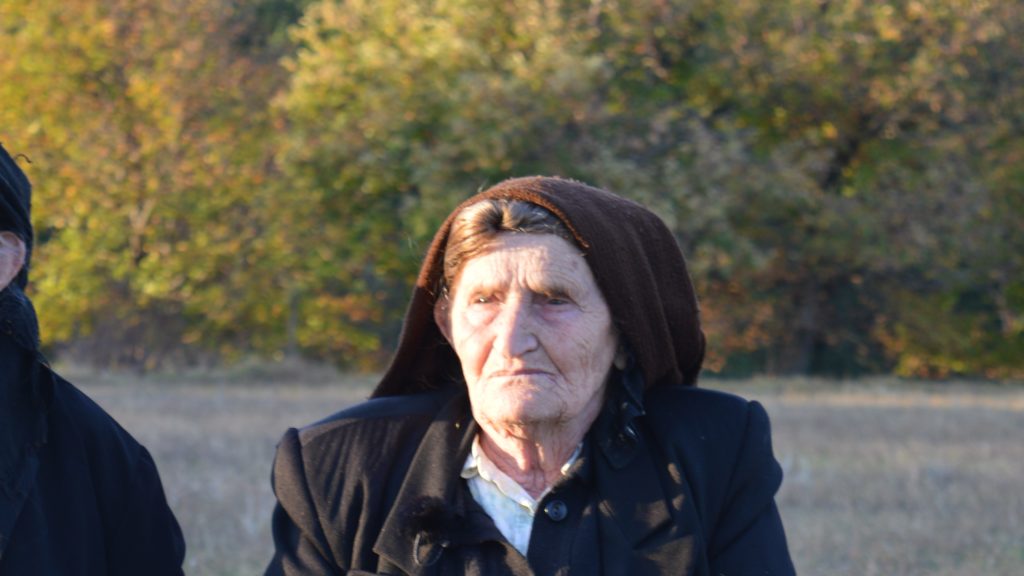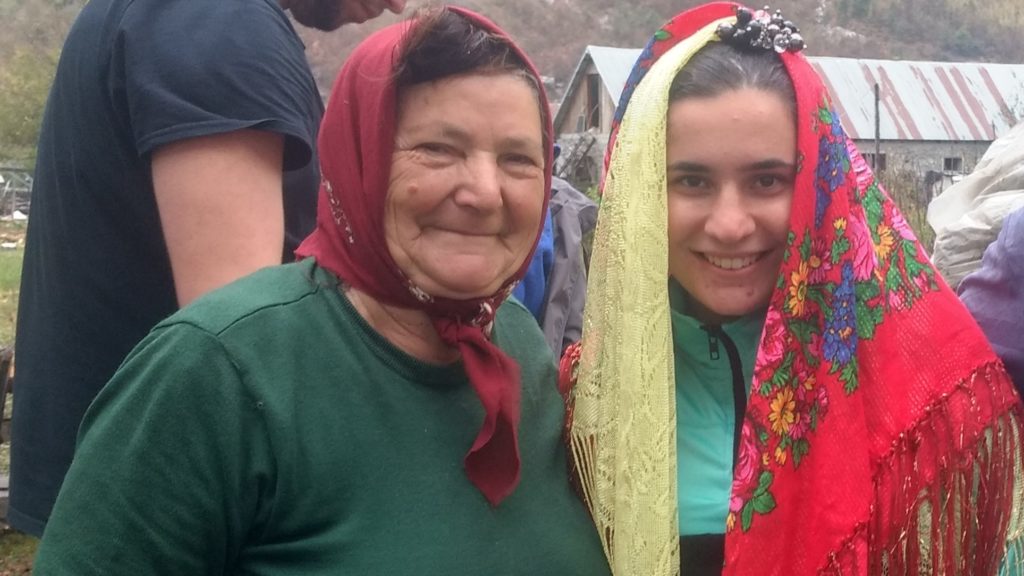Women’s Armor: Support and Strength
In old Albanian tradition, marriages would often be arranged (Berhami, 2018). This practice continued in some families into the 1990s in northern Albania. A husband and bride were often from separate villages, ensuring they had not met before their wedding day. Arranging marriages was also used as a token of friendship between families (Young, 2000) and pairings were frequently made when sons and daughters were children. Lule’s marriage was arranged when she was young.
“My father arranged my engagement for me when I was three years old, and I had not seen my husband until the wedding day. My father died while I was engaged and he did not see my marriage.”
– Lule Sokoli, 2018
Some of these practices continued into communist Albania, before the cultural revolution of the 1960s. Lule’s son’s mother-in-law, Pashkё Noja was married in her xhubleta in the mid-1950s. Like Lule, this was the first time that she had ever worn a xhubleta. She was neither given a xhubleta at a young age nor did she inherit a one from her mother. Her father purchased a xhubleta specifically for her wedding. Lule married around the same time as Pashkё and remembers feeling powerful when she put the xhubleta on; she was very happy to be able to wear the dress her mother made for her wedding (P. Noja, personal communication, Nov. 6, 2018).
“No one looked more beautiful than us that day”
– Lule Sokoli, 2018. Referring to herself and Pashkё on their wedding days.
Pashkё’s wedding lasted for four days. The first day was spent with her father’s family. This day of the celebration was a bittersweet occasion. Pashkё was leaving her family and the only life she’d ever known to join her husband and his relatives. In some cases, when the woman was taken from her father’s home, there was a “ritual sobbing”, signifying the woman’s loss of her old identity (Young, 2000). She was to shed her role in her childhood home and don a new one as the nuse (new bride) of her husband’s family. The following three days were a much livelier occasion. The festivities included the entire village and her husband’s many relatives who came to celebrate their marriage. For three days, the guests danced with one another, celebrating the wedding (P. Noja, personal communication, Nov. 6, 2018).
“I felt very good, very beautiful. There were already 200 people, all looking happy. My husband was the only son of his family, and we had three days of celebrations, dancing and singing.”
– Pashkё, 2018
The celebration was focused on the link between the families rather than the bond between bride and groom (Young, 2000). The bride was not able to enjoy the festivities of the wedding. Pashkё stood in her xhubleta, eyes directed towards the floor. She stood with her father-in-law and mother-in-law the entire time, while others enjoyed themselves (P. Noja, personal communication, Nov. 6, 2018).
“When they sing songs we weep, because in their songs they mentioned my mother and my dad, and the bride does not dance. She stood between her father-in-law and mother-in-law during all the time in one place at her feet. I did not have to move almost at all, even if I felt tired from standing on my feet, I should not even move my head, even if something fell out of my hand, someone who was sitting beside me would pick it up for me.”
– Pashkё, 2018
After the wedding, the bride moved into the home of her new husband and his family. From then on, the woman was referred to by her husbands name; she was seen as a possession of her husband. Over the next month after the marriage, she was expected to wear her best attire for visitors (Young, 2000). Pashkё wore her xhubleta on special occasions, and to church, for one year after her wedding (P. Noja, personal communication, Nov. 6, 2018). This was also the case for Prena, married in Nderlysaj, near Thethi. She inherited her xhubleta from her mother when she was a young woman. Prena wore the xhubleta on the day of her wedding and for the next year for special events. (P. Anonymous, personal communication, Oct. 27, 2018). This was so that visitors could determine whether the bride was a “worthy new addition to the household” (Young, 2000), another way to show that women held a subservient position to men.

